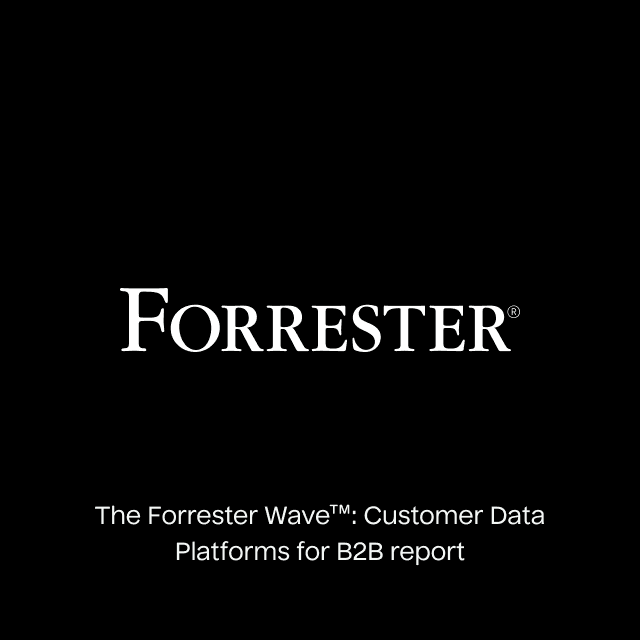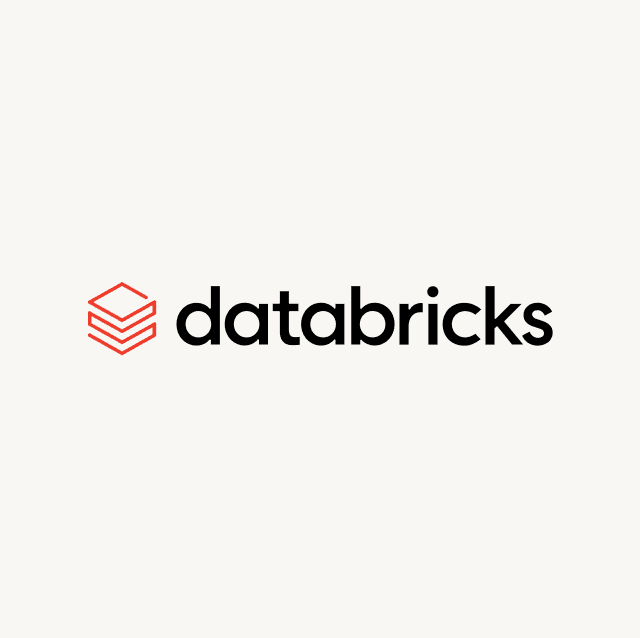The benefits of collecting data have become more important as more companies are moving to embrace the digital era. Access to large amounts of quality data can help you make better decisions, improve your marketing return on investment, and help you build better relationships with your customers
First-party data is something that all companies should collect to help them make a difference in the way they operate. This article will cover what exactly first-party data is, how to collect it, and how you can benefit from collecting it.
What is First-Party Data?
Any data that you collect directly from your customer is first-party data. It could be information about how a customer has interacted with your website or app, their purchase history, or their contact information.
What is Considered First-Party Data?
- Demographics: age, sex, income, education, employment.
- Purchase history: products purchased, subscriptions, cross-sells or upsells, length of time as a customer.
- Website analysis: length of time on the website, the different pages visited.
- Customer feedback: ratings, review sentiment.
- Social media: most active social media platforms, interactions with marketing material.
Why is First-Party Data Important
First-party data is important because you own it yourself. You collect it directly from customers, obtain their permission to use it, and are not reliant on a third-party to obtain it. Apart from the potential cost of tooling used to collect the data, it's free to collect. Also, since you collect it yourself, you know that the data is accurate and reliable.
What really makes first-party data important is how you use it. Companies should not collect data just to have data. First-party data allows you to accurately personalize your website and marketing communications, target the right audiences in ads, and have more thorough analytics.
Create 360° User Profiles in your Warehouse
Learn how to stitch your existing customer data into rich, actionable profiles directly in your data warehouse without writing a line of code.
Download this document to learn more about Hightouch's Adaptive Identity Resolution and how warehouse-native identity and entity resolution empowers companies with the best-possible uses for their data.


Benefits of First-Party Data
Accuracy
With first-party data, you know the data is accurate because you are in control of where and how you’re collecting first-party data. Plus, the data you are collecting is from customers directly interacting with your business instead of from a third-party.
Being Compliant
With more policies and privacy concerns becoming the norm, it’s important to know where your data has come from and if you have consent to use it. Knowing exactly where the data has been collected and what consent you’ve been given keeps you in compliance with regulations such as GDPR, CCPA, and any future regulations that may come in the future.
Personalization
Collecting first-party data can assist you in personalizing your marketing messages. Rather than sending blanket messaging to all your customers, you can tailor your messaging from insights you’ve gathered.
For example, if you can see a certain number of customers visiting your website and reading articles on a specific topic, when you release new content on the same topic, you could email them as you know they would be interested.
Build Trust With Your Customers
Being transparent about collecting first-party data and how you’ll use it helps build customer trust. When your customer knows that you won’t be using their data for alternative reasons, it can help improve their relationship with you.
How to Collect First-Party Data
There are multiple methods of collecting first-party data.
- Event-based tracking: you can use a tool like Snowplow to track users' behavior in your application or Google Analytics to see how people behave on your website. Tools like this can collect first-party behavioral data to help build a picture of your customers.
- Customer feedback and reviews: getting feedback can reveal what customers like and dislike about your business. Linking this to a customer profile can help you tailor the experience that each customer is expecting and find insights into the language your customers use and what might resonate for future customers.
- Email and SMS: you can see how customers respond to different messages and what they are more interested in through the click-through rates.
- Forms: these could be sign-up forms or lead-gen forms. Both are important ways to get data directly from customers.
- Purchase history: the fact someone has parted with their money is a strong indicator that can help show you certain trends in the things you sell.
Challenges of Collecting First-Party Data
Data Integration
A study by Stackbeam discovered that depending on the size of your business, you could use, on average, between 13 - 52 marketing tools. And that’s just marketing tools. Add in sales, HR, and customer support; the number could easily enter into the triple figures. And all of these tools collect their own first-party data.
You need to centralize your customer data into a single location, such as a data warehouse, to get the most out of your customer data. With it all in one place, you can have a single source of truth and a complete 360-degree view of your customers, maximizing the insights you can garner.
The trouble is integrating all of this data from the various data sources. It can be time-consuming and challenging, especially if you look to build solutions to integrate yourself.
Identity Resolution
Identity resolution is where you take the data from your different sources and create a single profile for a customer. It can be challenging if you have various data sources to match data to a single customer.
Data Activation
It’s all good knowing that you have a great first-party data strategy, collecting it and integrating it into a centralized location. But another challenge you can face is taking action on it. Typically, speed is essential when taking action on first-party data, and if someone requesting it is made to wait hours or even days to get hold of it to power a marketing campaign, it's possible this can harm conversions.
Consent and Compliance
Another challenge that can be presented is that you have all this first-party data, but if you don’t get the correct consent to collect it hasn’t been put in place, your data is useless. With the increasing pressure of privacy policies, you need to ensure that you collect data with the right consent. Failure to do this can reduce customer trust, and you could come under the firing range for breaking privacy compliance.
Use Cases of First-Party Data
Collecting first-party data is only the start of a first-party data strategy. Now you need to put it to work for you. Let’s look at some of the common uses of first-party data.
Personalized Marketing Campaigns
The more data you can get on a customer, the more you can offer and show them things that interest them, which can increase engagement. First-party data is an essential key to personalized marketing campaigns.
For example, if you are a pet company and collect data from your customer on the types of pets they own, you could make sure any offers you were promoting were sent to the customer who actually had those pets.
Lookalike Audiences
A key tactic when it comes to advertising is utilizing lookalikes audiences. Most ad platforms support this feature. It involves taking a segment of your audience and uploading it into the ad platform, where it will analyze the audiences you uploaded and show your ads to similar people.
An example of this could be if you were an e-commerce business and, from your first-party data, you recognized a list of all your high-value customers. Taking these customers and uploading them to an ad platform to create a lookalike audience would then try and find similar customers to show your ad campaign to.
Audience Suppression
Audience suppression is the opposite of lookalike audiences. It’s where you upload a list of customers into an ad platform, and they are then removed from the ad campaign. Again, most ad platforms support this. Audience suppression is useful as it reduces ad spend and can prevent any mixed messaging, like customers seeing an ad for a promotion when they bought at full price.
For example, if a subscription business was looking to increase its number of paying subscribers and wanted to run ads, they could take a list of the existing paid subscribers and suppress them in their ad campaigns as the messaging would not be relevant to them.
Attribution
Once all first-party data is centralized, it can make attribution much easier. All that data can reveal the different steps in the customer journey. They can correctly attribute at what point the customer converted so more budget can be allocated to techniques and tactics that make a difference.
Other Types of Customer Data
Zero-Party Data
Zero-party data refers to information users actively and knowingly provide, such as preferences, interests, and demographic information. It is collected through surveys, registration forms, and account preferences. This type of data is considered more privacy-friendly as users willingly provide it, and it can be used to tailor products, services, and marketing efforts more effectively. Companies can better understand the customer with the user’s explicit consent, leading to better-targeted advertising and personalization.
Second-Party Data
Second-party data refers to data that is collected by one organization and shared or sold to another organization. It is data that is collected from the first party’s own customers, such as website browsing history, purchase history, or demographics. Second-party data is more accurate than third-party data and can enhance insights into the second-party’s customers. The usage of second-party data should be guided by the user’s consent and data sharing agreement between the parties.
Third-Party Data
Third-party data refers to information collected by organizations not directly affiliated with the company or website that the user is interacting with. This data can come from various sources, such as online tracking technologies like cookies, social media networks, and data brokers. However, third-party data raises privacy concerns as it is collected without the user’s knowledge or consent and is not always accurate; it may also potentially include sensitive information.
Getting Started with First-Party Data
Now that you understand the benefits of collecting first-party data and how to use it, let’s look at how to get started.
Data Strategy
Before starting anything, it’s important to work out your data strategy. The main aim is to determine what you want from the data you’re collecting. It is for retargeting purposes, to enrich sales with more information about prospective customers, or better understand who your customers are.
When you clearly understand what you will be using the data for, you can review the different data sources you have and collect the data you need.
Data Collection
Once it’s clear what data you need to collect from your customers, it's time to implement the tools to help you if you aren't already. It could be adding Google Analytics to your website, Snowplow to your application, or changing the fields on your sign-up forms.
Data Integration
The data has been collected; now it’s time to create your single source of truth. One of the most modern methods to assist in this is implementing a composable CDP. A composable CDP is a range of tools that help you get your data in a centralized location, transform it (so it's in a useful state), and then make it available to all of your tools.
One of the favored tools for data integration, the act of getting data from disparate sources into a centralized location, is Fivetran. Fivetran can connect up to a large range of different tools and allows you to sync that information to a centralized location such as a data warehouse. Along the way, a tool like dbt is perfect for helping to model the data, so duplicate data and missing data are removed, and relevant data is joined together to help put together the big picture.
Data Activation
Once you decide the purpose of collecting data and what you want to do with it, implement methods for collecting that data, create a centralized location, and integrate and clean that data, it’s time for the next step.
Typically what you would see in a company is a data analyst taking the data in the data warehouse and creating dashboards from the initial data strategy. However, at the best of times, dashboards rarely get used, and it can be difficult to take action on the insights from a dashboard because it can require requests for data.
The better option is data activation. This involves a technology called Reverse ETL, where data from the data warehouse gets synced to the downstream tools of different departments. Hightouch is the leading data activation tool helping you take action on your data.
As mentioned in the first-party data use cases, creating lookalike audiences or suppression audiences is a perfect use case of Hightouch. You can connect your data warehouse to Hightouch and an ad platform like Facebooks Ads. Then you can sync, for example, any high-value customer you might have into Facebook Ads to create lookalike audiences. Once this is set up, you can set a schedule, and the data will sync automatically at a schedule of your choice, keeping the data in Facebook Ads up to date.
You can create a free Hightouch account to activate your data quickly.
Conclusion
Now more than ever, the collection of data, especially first-party data, can make a change in your business. If you want more information regarding your data strategy, read our 2023 customer data strategy article.
Create 360° User Profiles in your Warehouse
Learn how to stitch your existing customer data into rich, actionable profiles directly in your data warehouse without writing a line of code.
Download this document to learn more about Hightouch's Adaptive Identity Resolution and how warehouse-native identity and entity resolution empowers companies with the best-possible uses for their data.

















